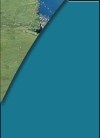Inishmore
One of the finest stone forts in Europe boldly stands on the edge of a 100 metre
cliff. The fort consists of three concentric semi-circle enclosures surrounded by
walls and also has a chevaux-de-frise.
Legend says that the fort delonged to Aengus, a chieftain of the Fir Bolg, banished
from the mainland after the Battle of Moytura.
(Baile Locha Riach The town of the Grey Lake)
A Norman settlement was found around a de Burgo manor estabolished after their conquest
of the country in 1235. Loughrea evolved into a well-defended medieval town. Today
only the town tower and an artificial watercourse, (the only town moat still functioning),
are all that remains of the medieval defences.
The ruins of the Carmelite Monastery founded by the de Burgos about 1300 can be seen
beside their present church.
Killaloe is a name etched in the folklore of Ireland and the great fort of Kincora where
Brian Boru resided during his reign as Ireland's High King from 1002 to 1014 covered the
site now occupied by the Catholic Church, the village green and a large number of
neighbooring houses.
Brian Boru led the cheiftains of Munster and Connaught and their fighting men at the battle
of Clontarf where, on the day the great King died, his army defeated the Vikings, ending
their domination in Ireland.
At the height of Brian Boru's power Kincora was a masisve fort, its full graneries and
copious food stores bursting with natures bounty.
The Vikings of Limerick and Dublin were required to pay a tribute of 500 tons of wine a
year to Brian's cellars, equal to 100,00 gallons of wine today. During the reign of Brian
Boru Kincora was the capital of Ireland but unfortunately nothing but the fame of this
great fort remains today.
The site of the hereditary home of the local rulers, the Dal gCais, is situated
on the southeastern side of a steep hill known as Crag or Cragliath, (Grey Rock)
a short distance away from Killaloe.
Ballydeely
(5 km north-northwest of Ennistymon)
is a striking bronze-age burial
mound, 8 m high and about 100 m in diameter.
Frost writing in 189,3 believed the correct name to be Carn Mac Tail,
the burial place of Mac Tail, son of Broc, chieftain of Corcomroe and
inauguration place of the chieftains of Corcomroe.
Folklore says that the cairn is the burial place of the defeated Connaught
army, (hence the name).
The region to the north of Doolin contains numerous cahers or stone ring
forts and earth forts (raths) surrounded by ditches.
To the south of the village is an upland area of great interest, scattered with
Stone-forts, megalithic tombs and remains of ancient churches.
There is a very high concerntration of habitation, (possibly medieval), to the
south of Ballyvaughan, which is interesting since the area was thought, at that
time to be outside the extent of Anglo-Norman settlement.
Over the top of Corkscrew Hill is the circular stone fort, which once housed one
of Ireland's most famous medieval law schools under the care and management of the
O'Davorens, a family of hereditary legal scholars and teachers. Donald O'Davoren is
credited as the compiler of both a Breton Law Glossary and "The prophecy of Conn of
the Hundred Battles" concerning the succession of the kings of Tara and the coming
of St. Patrick.
(Rath Bóirne- Burren earth fort)
(3 km from Cahermacnaghten, in the Feenagh Valley.) There is a medieval church on the site.
(Cathair Baile Cinn Mhargaidh - stone fort of the town at the head of the market)
1.5 km north of Kilfenora is a iron age structure of stone built with double ring walls
and a protective belt of upright stones for good defence. Interestingly enough, the fort
uses sharp limestone pillars set upright in the ground, a devise known as chevaux de fries,
as added defense. This strategy was adopted mainly by tribes of the Iberian Peninsula
(Spain and Portugal). Could there have been contact between the two regions in the Iron Age?
(Poll an Bhaic - hole or cave of the angle or bend)
is a large cairn,
excavated by Harvard archaeologists in 1934. They found the remains of 18 people, some
primative instruments and some bronze-age potsherds.
(Cathair Chonaill - Connell's fort
A strong and well-preserved ring fort on the Leamaneh - Ballyvavghan road.
one of the most elaborate stone built structures on the Burren, is situated on
a cliff edge. It has three ring walls, traces of stone houses and a souterrain
or underground passage. Cahercommaun was excavated in 1934 by Harvard archaeologists.
The structure dates from the 9th century.
(Off the N18 road between Newmarket-on-Fergus and Dromoland.)
This famous iron-age ring fort, 'one of our most remarkable antiquities has three
great stone walls of which the outermost, oval in outline, measures 450 m x 300 m'
0'Riordain, 1942.
On the N67 between Doonbeg and Kilkee, one passes Doonegall Point and the remains
of a large promontory fort.
|

